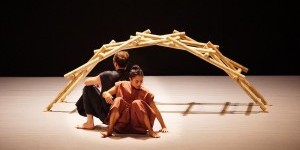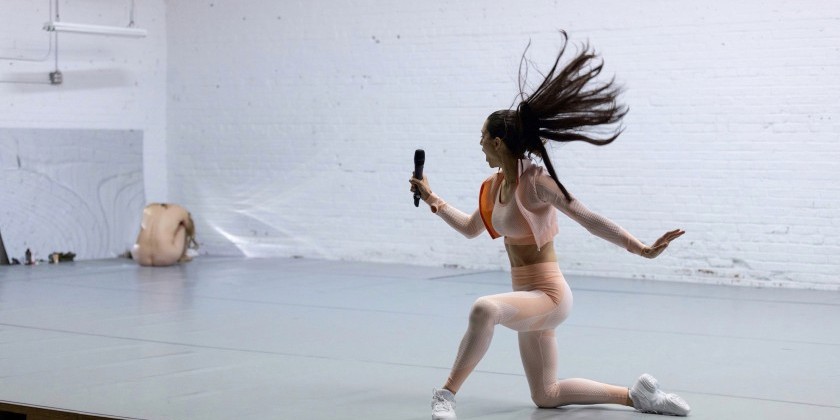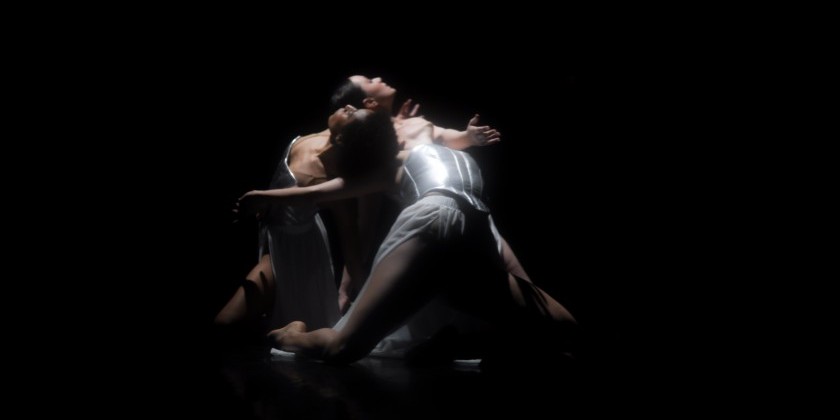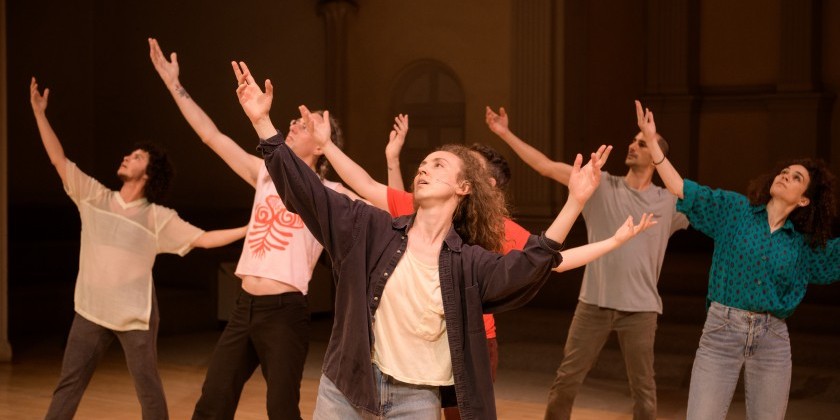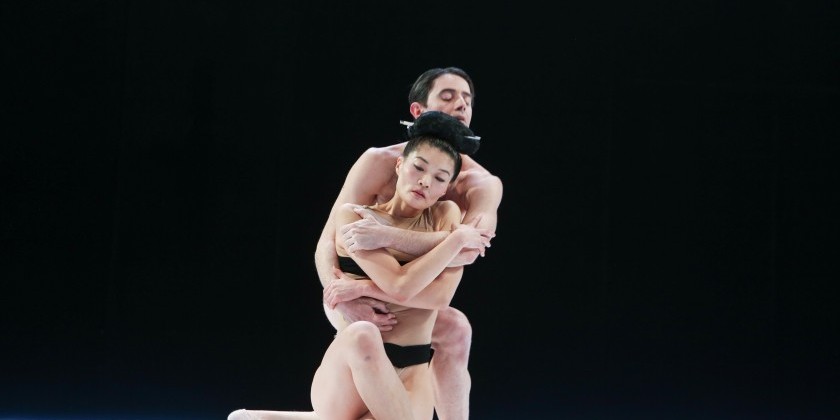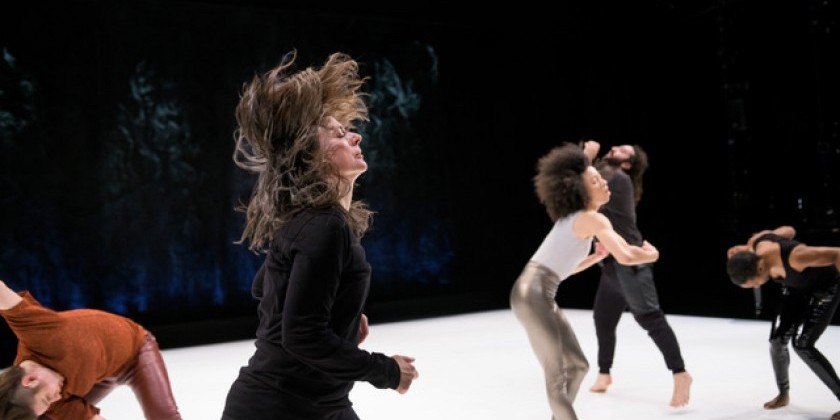IMPRESSIONS OF: Patrica Hoffbauer’s "Dances for Intimate Spaces and Friendly People"
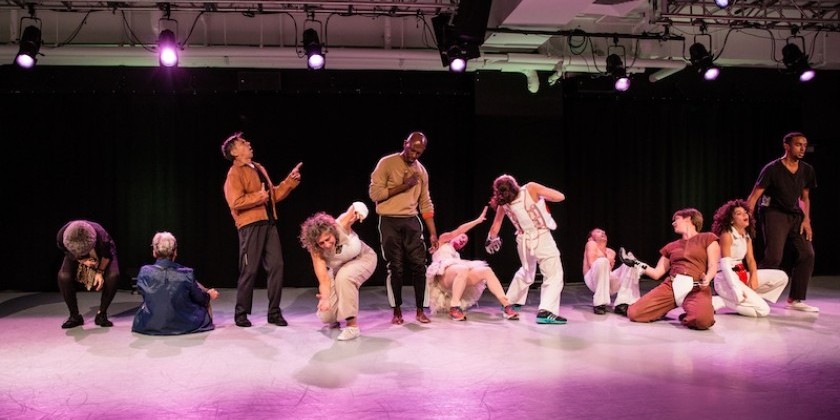
September 30–October 3 at 7:30 p.m.
Studios B, C, D & E at Gibney Dance: Agnes Varis Performing Arts Center
Collaborators: writer George Emilio Sanchez, video artist Peter Richards & designer Liz Prince
Cast: Alyssa Alpine, Jonathan Gonzalez, Peggy Gould, Kareem Alexander Hewitt, Ellie Kusner, Vincent McCloskey, Mor Mendel, Sharon Milanese, Yvonne Rainer, Tom Rawe, Sara Rudner, George Emilio Sanchez, David Thomson, and Jennifer Way
Patrica Hoffbauer’s Dances for Intimate Spaces and Friendly People takes social commentary and wraps it in the weight of political negligence, racial prejudice, and comedic slapstick. Audience members shuffle in and out of four different spaces to witness vignettes that range from nonsensical to poignant. They frame the interworkings of Hoffbauer’s mind.
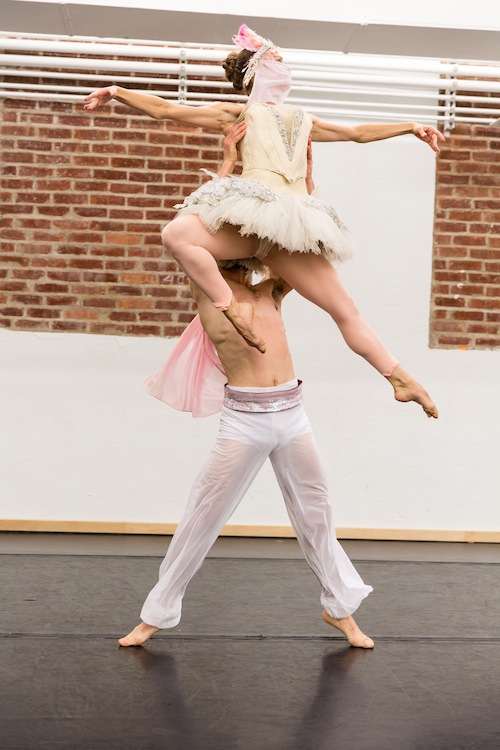
In the first space, Le Corsaire Duet begins with a man wearing warm-up clothes. He displays classical lines while a woman encourages him with varying degrees of intensity. Without warning, the duo abruptly exit then re-enter the space, a theme that continues throughout this piece. Each arrival reveals an addition or subtraction to costuming, and the content becomes more nonsensical, laborious, and clunky. The man stomps around in pastel pink-and-white Indian garb. The woman trades her warm-up clothes for a tutu and soft veil. They imitate a walrus, sea lion, and swan. At one point, the woman pulls out a black tube from her bodice to revive the man who presents a tortuous breakdown of form as the blood pumps through his veins, causing subtle ripples down his sternum. It is unclear when the duet ends, but after an awkwardly long pause and no sudden resurgence of the dancers, we realize it’s over.
In the second space, Women’s Quartet begins with four women wearing utilitarian jumpsuits and protective gear. They resemble ominous figures foreshadowing a nuclear disaster. It is unsettling to see them talk like normal people, while looking very abnormal. The four create a rhythm with their footfalls that is reminiscent of a heartbeat of marching soldiers. They move through a series of scenes then exit the space running backwards in a circle while singing, “I could be happy with you. If you could be happy with me.” The lasting residue of their vocal cadence leaves the space intriguingly haunted.
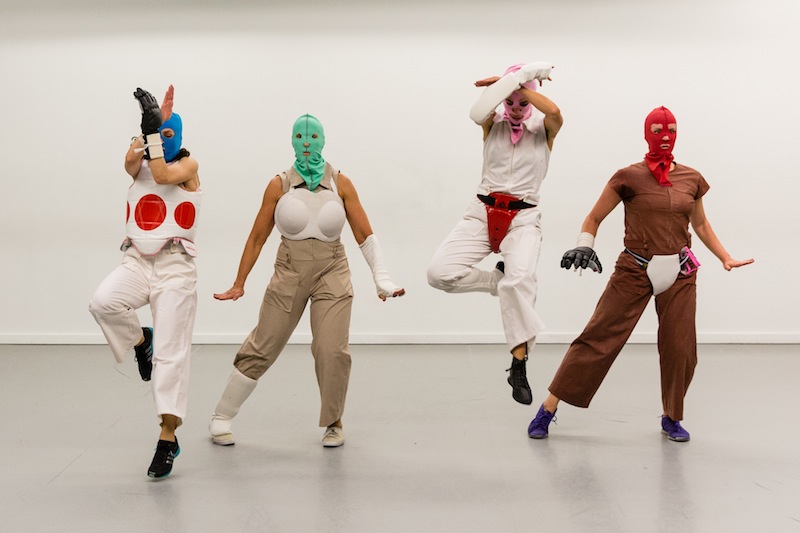
The third space is warm and smells like rubber. Spectators line the perimeter of the space for Men’s Trio while three black men casually nudge a trio of giant balloons that roll lazily around the space. The men undulate with ecstasy as another man in a furry pink suit and animal mask greets spectators with his prosthetic, white baby doll hands. He introduces himself as an ape from his former life and welcomes us to the funhouse of applied social science. He refers to the three men as his fellow darkies, but is quickly corrected. When he asks whether nigger was better, he is immediately cut-off and reminded that less is more. The balloons drift like gelatinous masses obstructing our view as the conversation cycles through historical dance references and academic jargon. They sing, “I could be happy with you,” with velvety baritones and a soft shoe routine. The piece continues to swirl around race and politics, and the balloons become physical representations of the issues we are bumping up against.
The Super Trio concludes our tour through Hoffbauer’s four vignettes. Three dancers fall in and out of rhythm while lip-syncing the entire score of “I could be happy with you.”. The trio performs the soft shoe routine, seen during Men’s Trio, with a playful elegance and relaxed charm. They offer scarves to the audience, toss hats overhead, and slip jackets from one pair of shoulders to another in a delightful choreography of clothes.
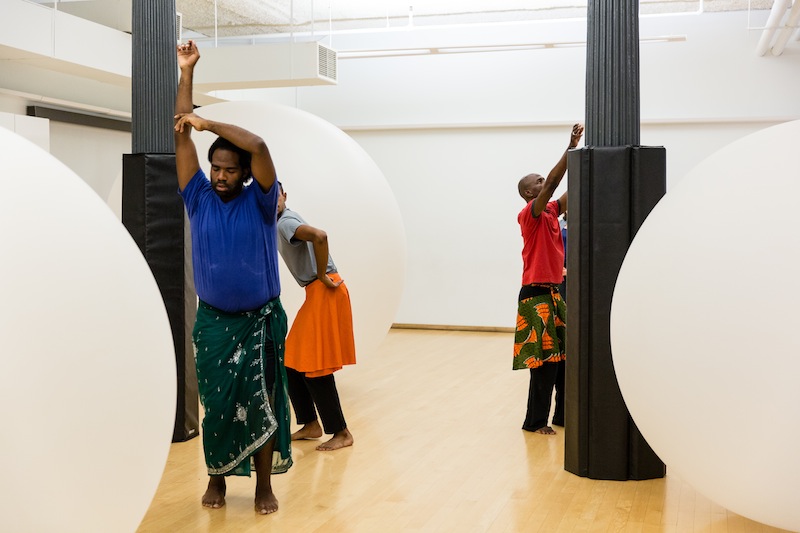
They speak of relevance and time while one audience member wanders into the space. This “audience member” works diligently to insert herself into the routine by commandeering a tossed jacket, mimicking footwork, or situating herself within the frame of the trio. Eventually, they guide her to a seat and say, “Your time is over.” This discarded interloper is Yvonne Rainer, and the weight of her repudiation is devastating. A promising celebration of age and embodiment quickly shifts to a somber reality that devalues age and casts off its history like an irrelevant relic.
The evening ends with a convergence of the audience groups. The entire ensemble reconvenes one last time to share the soft shoe routine until Rainer proclaims, “Your dance is dead.”
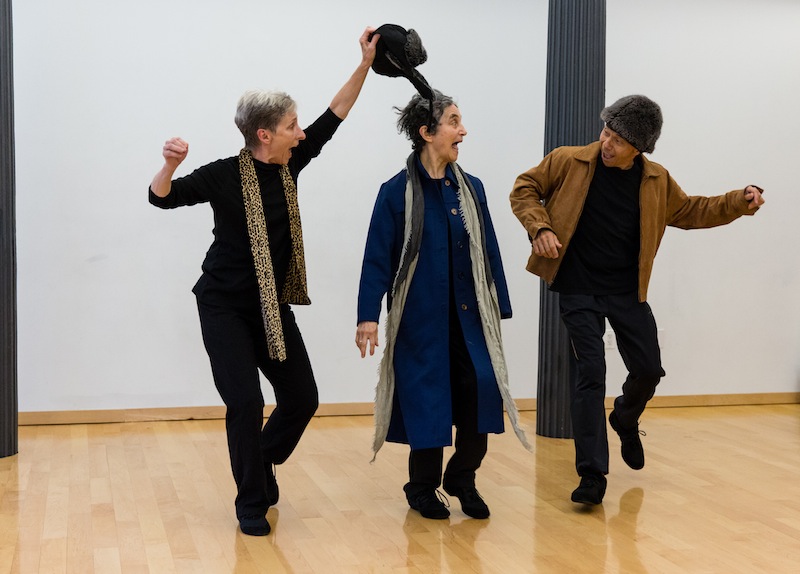
Hoffbauer’s work is a judicious funhouse that shapes your experience based on one of four possible journeys. It’s easy to feel comfortable in the chaos of it all. The works touch on important issues but undercuts them with humor and verve. Maybe Hoffbauer wants you to laugh so you don’t cry or perhaps humor wraps these urgent woes in a more palatable package. It proposes a lot to think about, and as I walked away under my umbrella canopy, I couldn’t help humming, “I could be happy with you.”
Share Your Audience Review. Your Words Are Valuable to Dance.
Are you going to see this show, or have you seen it? Share "your" review here on The Dance Enthusiast. Your words are valuable. They help artists, educate audiences, and support the dance field in general. There is no need to be a professional critic. Just click through to our Audience Review Section and you will have the option to write free-form, or answer our helpful Enthusiast Review Questionnaire, or if you feel creative, even write a haiku review. So join the conversation.







